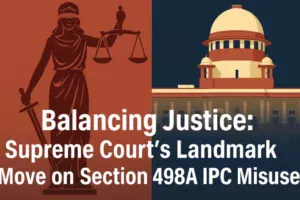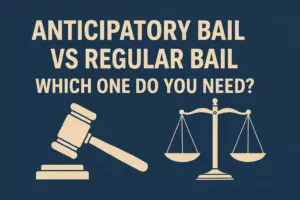The Hindu Marriage Act, 1955, stands as a landmark legislation that redefined the institution of marriage for Hindus in post-independence India. Enacted to bring uniformity, clarity, and a modern legal framework to personal law, the Act governs the conditions, ceremonies, and legal ramifications associated with Hindu marriages. This article provides an in-depth exploration of the Act’s historical context, key provisions, and its contemporary impact on Hindu society.
1. Historical Context and Background
Pre-Independence Scenario
Before India’s independence, marital practices among Hindus were governed primarily by customary traditions and religious scriptures. There was considerable diversity in rituals, ceremonies, and the legal recognition of marriage, which often varied regionally. The colonial period introduced elements of Western legal thought and codification, prompting the need for a uniform legal approach.
Enactment of the Hindu Marriage Act, 1955
In the wake of independence, the Indian government embarked on reforming personal laws to reflect modern values and ensure greater social justice. The Hindu Marriage Act, 1955, was part of this broader reform agenda. Its introduction aimed to:
- Standardize matrimonial practices: Establishing a legal definition of marriage and setting clear conditions for its validity.
- Protect individual rights: Ensuring that both spouses have legal recourse in cases of marital discord.
- Modernize personal law: Moving away from purely ritualistic and customary practices to a codified system that reflects contemporary societal norms.
2. Scope and Applicability
Who Does the Act Cover?
The Act applies to all persons who are Hindus by religion. Over time, judicial interpretations have broadened this scope to include:
- Hindus
- Buddhists
- Jains
- Sikhs
By extending its coverage beyond the orthodox Hindu community, the Act ensures a uniform legal framework for a diverse group of communities that share similar cultural and religious values.
Nature of the Act
While marriage in traditional Hindu thought is often seen as a sacred union, the Hindu Marriage Act treats it as a legal contract. This dual perspective helps:
- Uphold religious sentiments: Recognizing the sanctity and social importance of marriage.
- Ensure legal protection: Providing mechanisms for redress and enforcement of marital rights and obligations.
3. Key Provisions of the Act
The Act is structured into several sections that detail everything from the conditions for a valid marriage to the procedures for divorce and judicial separation. Below are some of its most significant provisions:
3.1 Conditions for a Valid Hindu Marriage (Section 5)
For a Hindu marriage to be legally recognized, certain conditions must be satisfied:
- Monogamy: Neither party should have a living spouse at the time of marriage.
- Age Requirement: Typically, the bride must be at least 18 years old and the groom at least 21 years old.
- Consent: Both parties must enter into the marriage voluntarily and without coercion.
- Prohibited Degrees of Relationship: The Act specifies relationships within which marriage is legally forbidden (e.g., marriage between close blood relatives).
3.2 Ceremonial Requirements
The Act recognizes that Hindu marriages can be solemnized through various rituals. It does not prescribe one fixed ceremony but acknowledges:
- Diverse Traditions: Marriages may be conducted according to regional customs, provided that the essential conditions are met.
- Symbolic Acts: Rituals like the ‘saptapadi’ (seven steps) and exchange of garlands are given legal recognition as part of the marriage process.
3.3 Registration of Marriages
While the Act itself does not mandate the registration of marriages, many states have enacted rules to ensure that marriages are registered. Registration:
- Acts as legal evidence: It provides an official record that is crucial for asserting rights, especially in matters of divorce, inheritance, and maintenance.
- Streamlines Legal Proceedings: A registered marriage simplifies the judicial process when disputes arise.
3.4 Marital Rights and Obligations
The Act lays down the framework for the mutual rights and responsibilities of spouses:
- Maintenance and Support: Both spouses are expected to contribute to the welfare of the family.
- Restitution of Conjugal Rights: If one spouse withdraws from the society of the other without reasonable cause, the aggrieved party may apply to the court to restore the marital relationship.
- Duty to Co-habit: The Act underscores the commitment to live together as a family unless a valid legal ground for separation exists.
4. Judicial Remedies: Divorce, Annulment, and Separation
When a marriage fails, the Hindu Marriage Act provides several legal remedies:
4.1 Grounds for Divorce
The Act specifies various grounds on which a divorce (contested) may be sought. Some of the key grounds include:
-
- Adultery: Engagement in extramarital relationships.
- Cruelty: Physical or mental cruelty that endangers the well-being of a spouse.
- Desertion: Abandonment of a spouse for an extended period without reasonable cause.
- Conversion: If one spouse converts to another religion, it may be considered grounds for divorce.
- Mental Disorder: Persistent mental illness that makes cohabitation impossible.
- Incurable Diseases: Serious diseases that can lead to a breakdown of marital relations.
4.2 Judicial Separation and Annulment
Apart from divorce, the Act provides for:
- Judicial Separation: A legal process that allows spouses to live apart without formally dissolving the marriage.
- Annulment of Marriage: In cases where the marriage was conducted in contravention of the conditions stipulated in the Act (such as a lack of valid consent or prohibited relationships), the marriage may be declared null and void.
4.3 Restitution of Conjugal Rights
As a unique feature, the Act allows a spouse who has been deserted to file for restitution of conjugal rights. This remedy:
- Seeks to Reunite Spouses: Courts can order the estranged spouse to resume cohabitation.
- Emphasizes the Sanctity of Marriage: It underscores the expectation that marriage is not only a social contract but also a commitment that merits preservation, barring justified reasons for separation.
5. Amendments, Reforms, and Contemporary Interpretations
5.1 Evolving Judicial Interpretations
Since its enactment, the Hindu Marriage Act has been the subject of extensive judicial scrutiny. Courts have:
- Clarified Ambiguities: Interpreting the meanings of “cruelty,” “desertion,” and “mental disorder” in light of contemporary standards.
- Balanced Tradition with Modernity: Ensuring that the law adapts to evolving societal values while respecting cultural traditions.
5.2 Calls for Reform
Critics and reformers alike have debated several aspects of the Act:
- Gender Equality: Although the Act has progressively been interpreted to protect the rights of women, some argue that certain provisions still reflect outdated notions.
- Registration and Evidence: The non-mandatory nature of marriage registration under the Act in some states has led to calls for a more uniform and streamlined process.
- Adaptation to Modern Relationships: As societal perceptions of marriage evolve—with discussions on live-in relationships and, more recently, debates on same-sex marriages—there is increasing pressure to modernize the Act further.
5.3 Intersection with Other Laws
The Hindu Marriage Act often interacts with other legal provisions, such as:
- Domestic Violence Laws: The Protection of Women from Domestic Violence Act, 2005, complements the Act by providing additional safeguards.
- Uniform Civil Code Debates: Ongoing discussions about a uniform civil code in India continue to influence perspectives on the Act, with debates centered around its consistency with the broader goal of legal equality.
6. Contemporary Issues and Landmark Case
6.1 Judicial Landmarks
Several cases have shaped the modern understanding of the Act:
- Interpretation of “Cruelty”: Courts have expanded the definition to include both physical and mental cruelty, thereby offering greater protection to vulnerable spouses.
- Restitution of Conjugal Rights: Landmark judgments have debated whether compelling a spouse to return to the marital home infringes on personal liberty.
- Child Custody and Maintenance: In divorce proceedings, courts have balanced the rights of both parents with the best interests of children, setting precedents that continue to influence family law.
6.2 Social and Cultural Implications
The Act is not just a legal document; it plays a vital role in shaping social norms:
- Empowerment of Women: Over the decades, legal remedies under the Act have empowered women to seek justice and protection within the marital framework.
- Preservation of Family Unity: While critics argue that certain provisions (like restitution of conjugal rights) can be intrusive, many see them as a commitment to preserving the sanctity of marriage.
7. Criticisms and Future Prospects
7.1 Criticisms of the Act
Despite its progressive foundations, the Hindu Marriage Act has faced criticism:
- Inherent Gender Bias: Some provisions are seen as favoring marital unity over individual autonomy, often at the expense of one partner’s rights.
- Outdated Notions: Critics argue that certain elements of the Act do not adequately reflect contemporary realities, such as the diversity of modern relationships and evolving family structures.
- Compulsory Reunification: The restitution of conjugal rights, for example, has been contentious, with debates over whether it infringes on personal freedom.
7.2 Future Reforms
Looking ahead, several areas may see further reform:
- Enhanced Registration Mechanisms: A move towards mandatory registration across all states could simplify legal proceedings and ensure greater protection for spouses.
- Broader Inclusivity: With ongoing debates about same-sex marriage and alternative family structures, future reforms may seek to broaden the scope of the Act.
- Balancing Rights and Duties: Striking a fair balance between the sanctity of marriage and individual autonomy remains a key challenge for lawmakers and the judiciary alike.
8. Conclusion
The Hindu Marriage Act, 1955, represents a significant evolution in the legal and social landscape of India. By codifying the principles that govern marriage among Hindus, it has provided a robust framework that not only respects longstanding cultural traditions but also adapts to modern values. From clearly defined conditions for a valid marriage to comprehensive remedies in the event of marital discord, the Act continues to influence the lives of millions.
While challenges and criticisms persist—especially as societal norms evolve—the Act’s enduring legacy lies in its attempt to balance tradition with progress, duty with personal freedom, and individual rights with social responsibility. For anyone navigating the complexities of marriage under Hindu law, understanding the provisions of this Act is not merely an academic exercise; it is essential for safeguarding rights, resolving disputes, and ultimately, fostering a more equitable family structure in contemporary India.
FAQ (FREQUENTLY ASKED QUESTIONS)
-
What is the Hindu Marriage Act, 1955?
It is a landmark legislation enacted to regulate marriage and divorce among Hindus (and communities like Buddhists, Jains, and Sikhs) in India by codifying traditional practices into a modern legal framework. -
Who is covered under the Hindu Marriage Act?
The Act applies to Hindus, Buddhists, Jains, and Sikhs. In some interpretations, it extends to anyone considered a Hindu by customary usage. -
What is the minimum legal age for marriage under the Act?
The minimum age is 18 years for a bride and 21 years for a groom. -
What constitutes a valid marriage under the Act?
A valid marriage requires that both parties give free and full consent, meet the age criteria, are not within prohibited degrees of relationship, and the marriage is solemnized in accordance with accepted Hindu rites. -
What are the essential conditions for a valid marriage as per Section 5 of the Act?
Both parties must be capable of consent, not be related within prohibited degrees, be of the prescribed age, and must not have a living spouse at the time of marriage. -
Is marriage registration mandatory under the Hindu Marriage Act?
The Act does not mandate registration, but many states have implemented rules making registration essential to provide legal evidence and simplify dispute resolution. -
Can a Hindu marriage be solemnized through any ritual?
Yes, the Act recognizes various traditional Hindu rituals. The specific ceremony can vary as long as the core legal requirements are fulfilled. -
What are the grounds for divorce under the Hindu Marriage Act?
Grounds include adultery, cruelty, desertion, conversion to another religion, mental disorder, and incurable diseases, among others. -
What is meant by ‘restitution of conjugal rights’?
It is a legal remedy where one spouse can petition the court to order the other to resume cohabitation, provided they have withdrawn without reasonable cause. -
How does the Act address domestic violence issues?
While the Act outlines marital rights and duties, domestic violence is primarily addressed under separate legislation like the Protection of Women from Domestic Violence Act, 2005. -
What is judicial separation under the Act?
Judicial separation is a legal process allowing spouses to live apart without officially dissolving the marriage, preserving certain legal aspects of the marital relationship. -
Can a marriage be annulled under the Act?
Yes, annulment is possible if the marriage is deemed void or voidable—for instance, if it was contracted without proper consent or within prohibited degrees of relationship. -
How does the Act ensure free consent in marriage?
Both parties must willingly agree to the marriage without coercion, ensuring that the consent is informed and voluntary. -
What happens if one spouse remarries without a legal divorce?
Remarriage is not permitted under the Act unless the previous marriage has been legally dissolved through divorce or annulment. -
How does the Act define prohibited degrees of relationship?
The Act specifies certain familial relationships (such as direct blood relations) within which marriage is legally prohibited to avoid incestuous unions. -
Does the Act allow for inter-caste or inter-religious marriages?
Inter-caste marriages within the Hindu community are permitted if all legal conditions are met. However, inter-religious marriages typically require conversion or fall under separate legal regimes. -
What provisions does the Act make for marital maintenance and support?
Both spouses have a duty to support each other and, where applicable, their children, ensuring financial security post-separation or divorce. -
What role do courts play under the Hindu Marriage Act?
Courts interpret and enforce the provisions of the Act, resolve disputes related to marriage, divorce, restitution of conjugal rights, and administer legal remedies. -
Can the Hindu Marriage Act be amended?
Yes, like any legislation, the Act can be amended by the Parliament to reflect evolving social values and contemporary legal challenges. -
How has the Act impacted women’s rights?
The Act has provided women with legal remedies against cruelty and abuse and has empowered them to seek divorce or judicial separation under justified grounds. -
How are cases involving mental disorder handled under the Act?
Persistent mental disorders that impair marital life can be cited as grounds for divorce under the Act. -
What does the Act say about child custody during divorce proceedings?
While the Act itself does not extensively detail child custody, courts take the best interests of the child into account during divorce proceedings, often guided by broader legal principles. -
How is the Act relevant in contemporary society?
The Act continues to evolve through judicial interpretation and amendments, reflecting modern values while preserving essential cultural traditions in marriage. -
Why is the Hindu Marriage Act significant in Indian law?
It is a cornerstone of personal law for Hindus, establishing uniform rules for marriage and divorce and influencing broader legal reforms such as discussions around a uniform civil code. -
Are alternative dispute resolution methods encouraged under the Act?
Yes, mediation and reconciliation are often promoted by courts to resolve marital disputes amicably before resorting to prolonged litigation. -
How does the Act protect individuals from forced marriages?
By emphasizing free and informed consent as a core condition, the Act helps safeguard against forced marriages. -
What legal remedies are available if one spouse deserts the other?
Desertion is recognized as a valid ground for divorce, and the deserted spouse may seek legal redress including dissolution of the marriage and compensation. -
How is cruelty defined under the Hindu Marriage Act?
Cruelty includes both physical and mental abuse that causes harm or distress to a spouse, and its interpretation has been broadened through judicial decisions. -
Does the Act encourage mediation before proceeding with divorce?
Yes, many courts promote mediation and counseling sessions to help spouses resolve conflicts and potentially reconcile before finalizing a divorce. -
How has the judiciary influenced the interpretation of the Hindu Marriage Act?
Judicial decisions have clarified ambiguous provisions, adapted interpretations to current social norms, and ensured that the Act remains responsive to modern challenges.
Sources :-
















